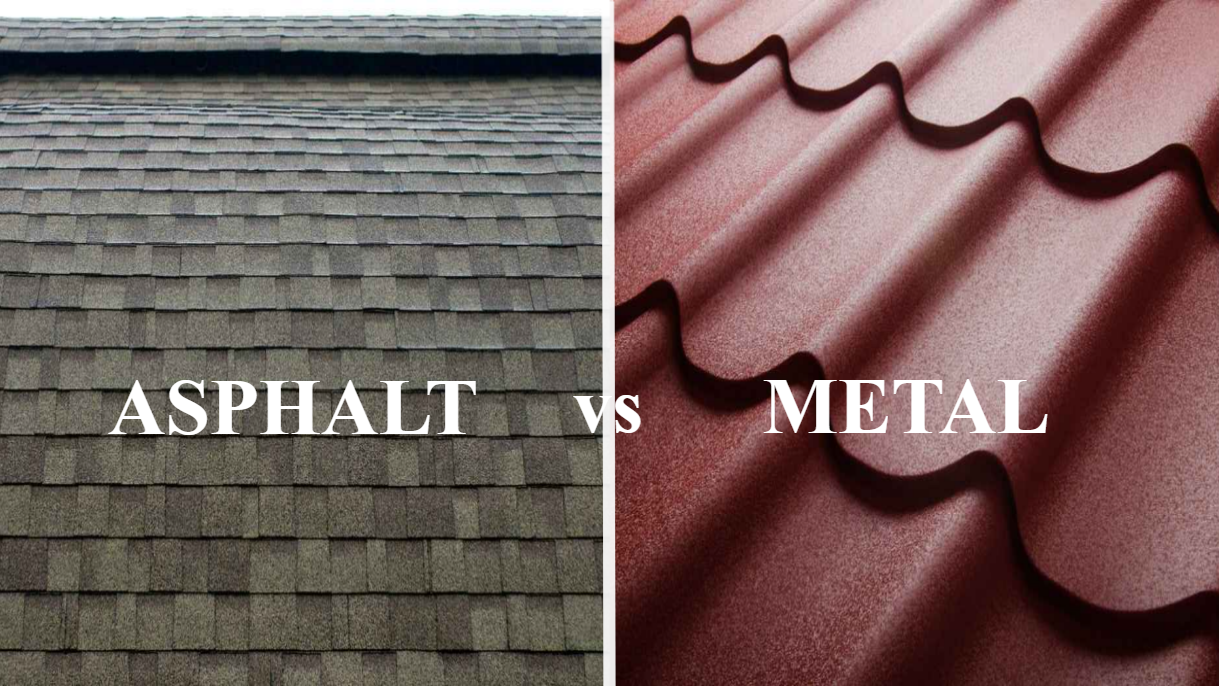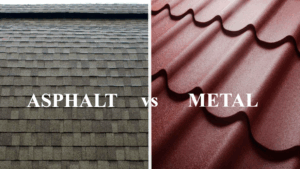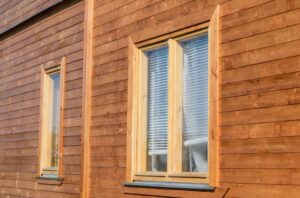Nebraska winters can feel like they’re straight out of a survival documentary—bitter wind, ice-packed storms, temperature swings that make your siding groan, and snow that piles up faster than you can shovel. And while homeowners do their best to bundle up and prepare, your roof takes the brunt of it all.
But here’s the thing: asphalt roofs and metal roofs handle winter very differently. If you know what each one faces in the cold season, you can get ahead of costly damage and extend the life of your home’s biggest protector.
Before we dig into the details, here are the quick-hit insights every Nebraska homeowner should keep on their radar:
Key Takeaways
- Asphalt and metal roofs respond very differently to freezing temps, snow load, and ice buildup.
- Asphalt shingles face brittleness, granule loss, and ice dam risks.
- Metal roofs excel at shedding snow but expand and contract with temperature swings.
- Knowing the warning signs of winter damage can save homeowners thousands.
- A seasonal inspection is one of the smartest moves you can make to protect your investment.
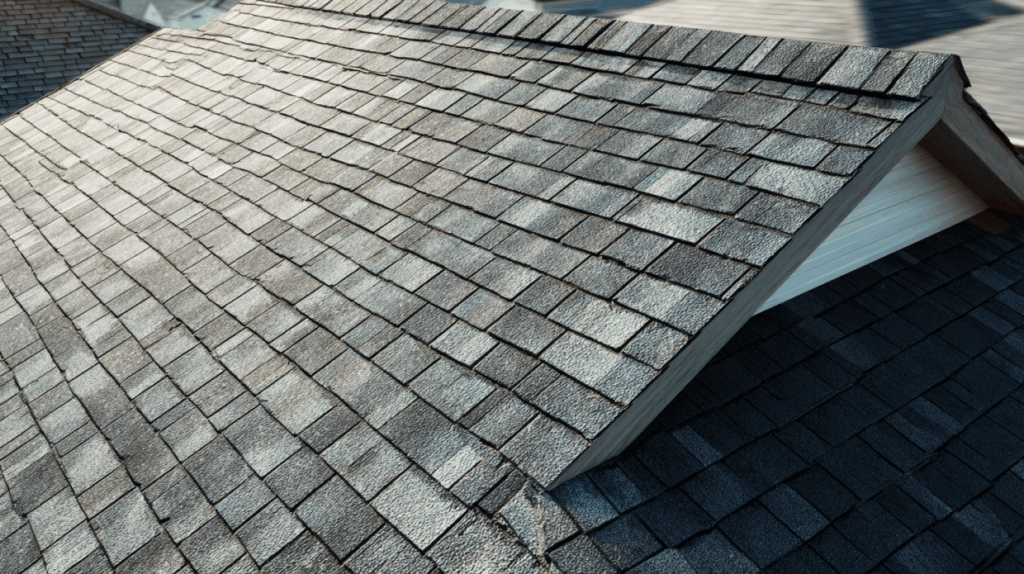
How Nebraska Winters Beat Up Asphalt Roofs
Asphalt shingles are the most common roofing material in Nebraska—but they’re also the ones that feel winter stress the most. When temps drop, asphalt hardens. When temps rise, shingles bend and flex again. After a few cycles, that takes a real toll.
1. Freezing Temperatures = Brittle Shingles
Once we hit deep-freeze weather, asphalt shingles lose flexibility. This makes them more prone to cracking under wind, snow weight, or even routine thermal expansion. It’s like bending cold plastic—eventually, it snaps.
2. Ice Dams Hit Asphalt Roofs the Hardest
Ice dams are one of winter’s biggest enemies. As heat escapes your attic, snow melts, trickles downward, and refreezes along the edges of your roof. That ice builds layer after layer until water starts creeping under your shingles.
The problem? Asphalt shingles aren’t watertight. They rely on overlapping layers. Once ice dams form, water has plenty of chances to sneak inside.
3. Heavy Snow = Long-Term Wear
Snow is heavy—about 20 pounds per cubic foot. Add drifting winds into the mix and some parts of your roof may be carrying way more weight than others. Long-term, that pressure can cause shingle edges to curl, loosen, and deteriorate faster.
4. Granule Loss Accelerates in Winter
Every time Nebraska storms toss sleet, ice, or high winds across your roof, asphalt shingles lose protective granules. Over time this creates bald spots that age the roof prematurely and increase your risk of leaks.
How Nebraska Winters Challenge Metal Roofs
Metal roofs are known for handling extreme weather well, but they’re not invincible. Winter just stresses them differently.
1. Snow Slides—Fast
One advantage of metal roofing is its slick surface. Snow doesn’t sit there long—it slides off in sheets. While that’s great for reducing load, it can cause sudden snow dumps around entryways, decks, and walkways. Snow guards help, but without them, falling snow can surprise you.
2. Metal Expands and Contracts
Temperature swings in Nebraska are dramatic. One day it’s 50 degrees, the next it’s below zero. Metal naturally expands when warm and contracts when cold. If panels aren’t installed with proper fastening systems, winter can lead to:
- Loose screws
- Warped panels
- Stress on seams
- Increased noise during windstorms
This movement is normal—but it must be accounted for during installation.
3. Ice Can Still Form
Metal roofs aren’t immune to ice dams. They’re less common, but can still form if:
- Attic insulation is poor
- Ventilation is inadequate
- Snow melts unevenly
If ice dams form on a metal roof, they can force water underneath trim pieces, ridge caps, or fasteners.
4. Wind Can Lift Improperly Secured Panels
Strong winter winds in Nebraska can hit 40–60 mph. Metal roofs stand up well to wind, but only if they were installed correctly. Missing screws or loose fasteners can quickly turn into lifted panels.
Asphalt vs. Metal in Nebraska Winters: A Side-by-Side Breakdown
Here’s a simplified look at how the two materials stack up when winter hits hardest:
Winter Performance at a Glance
- Snow Load:
- Asphalt: Holds snow longer
- Metal: Sheds snow quickly
- Asphalt: Holds snow longer
- Ice Dams:
- Asphalt: Very susceptible
- Metal: Less likely, but possible
- Asphalt: Very susceptible
- Cold-Weather Brittleness:
- Asphalt: High
- Metal: Low
- Asphalt: High
- Storm Durability:
- Asphalt: Can lose shingles
- Metal: May loosen fasteners
- Asphalt: Can lose shingles
- Longevity Impact:
- Asphalt: Winter causes significant wear
- Metal: Winter has moderate impact
- Asphalt: Winter causes significant wear
How to Protect Your Roof—No Matter What It’s Made Of
Even if your roof is older or already stressed from past winters, proactive care can prevent major damage. Here’s what homeowners should focus on before and during the cold months:
1. Get a Pre-Winter Inspection
A professional roofer can identify vulnerable areas and winterize your roof before the bad weather hits.
2. Improve Attic Insulation and Ventilation
This is the #1 way to prevent ice dams. A balanced attic reduces heat loss and maintains even roof temperatures.
3. Keep Gutters Clear
Clogged gutters contribute directly to ice dams and poor drainage.
4. Manage Snowpile Safely
Removing heavy snow from asphalt roofs is smart—just don’t scrape down to the shingles. For metal roofs, install snow guards to protect walkways from falling snow.
5. Monitor for Warning Signs
Keep an eye out for:
- Interior leaks
- Water stains
- Curling or missing shingles
- Unusual roof noises
- Gaps in roof panels
- Ice ridges forming along the edges
Early detection saves thousands.
A Roof Owner’s Winter Survival Guide
(Quick, Easy Tips for Busy Homeowners)
- Check your attic for warm spots—warm spots = heat loss = ice dams
- Look for loose shingles or panels before storms roll in
- Trim trees that hang over your roof to reduce ice damage
- Install heat cables in problem areas (especially asphalt roofs)
- Schedule a mid-winter or early spring roof check if storms were severe
- Don’t climb on icy roofs—call a pro for safe snow removal
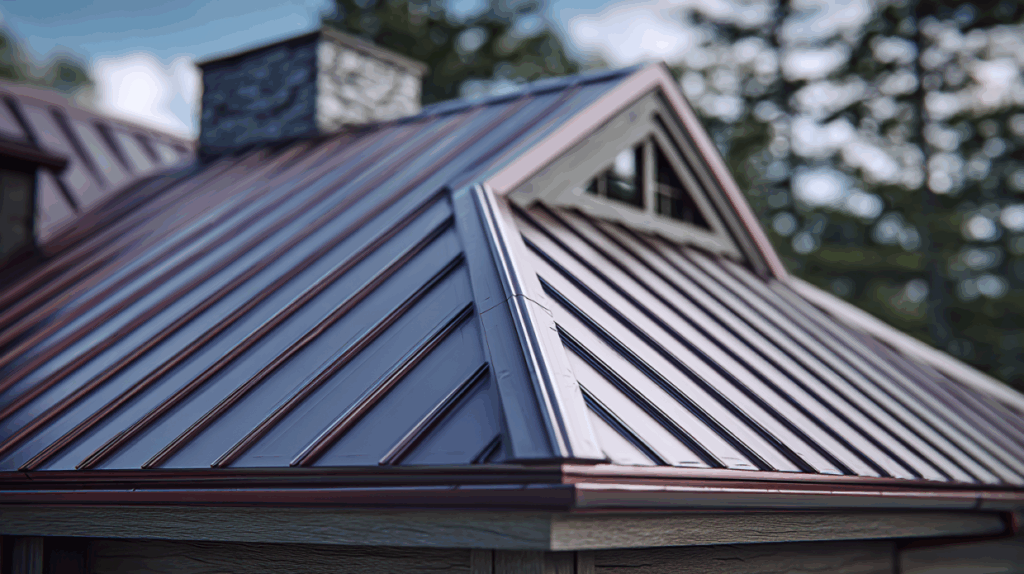
Cold-Season Questions Homeowners Ask All the Time
(Your Winter Roofing Q&A Roundup)
Why does my asphalt roof lose shingles in winter?
Because shingles become brittle in cold weather, making them more likely to crack or tear during high winds.
Is a metal roof noisy in winter?
A properly installed metal roof shouldn’t be excessively loud. Popping sounds usually mean panels are expanding or contracting without enough room to move.
Can snow really damage a roof?
Absolutely. Heavy snow adds weight and increases the risk of ice dams—both can cause leaks or structural stress.
Should I try to remove snow myself?
Only from the ground with a roof rake. Never climb onto an icy roof. It’s dangerous, and you can easily cause damage.
Which roof handles Nebraska winters better?
Both can perform well—as long as they’re installed correctly and maintained regularly. Asphalt needs more winter monitoring; metal needs proper fastening and snow control.
Your Roof Deserves a Fighting Chance This Winter
Nebraska winters are tough, but the right care keeps your roof tougher. Whether you’ve got asphalt or metal overhead, understanding winter stressors can help you avoid surprise leaks, structural problems, and expensive repairs down the road. A little attention now goes a long way toward protecting your home when the next storm rolls through.
Ready to Protect Your Roof This Winter?
Contact Bishop Exteriors in Omaha, Nebraska for expert inspections, winter readiness services, and repairs you can count on.


